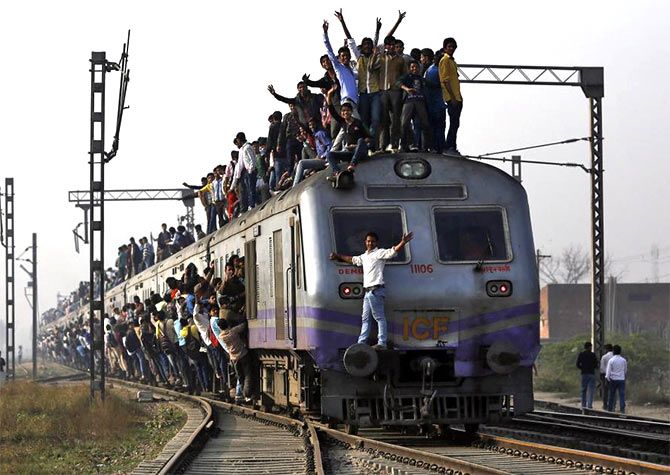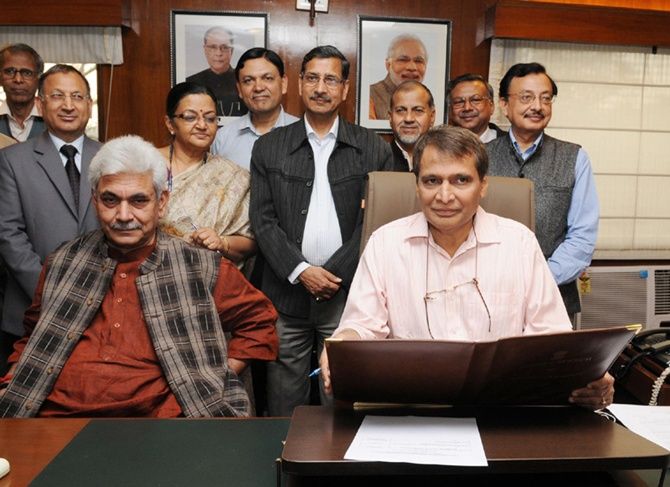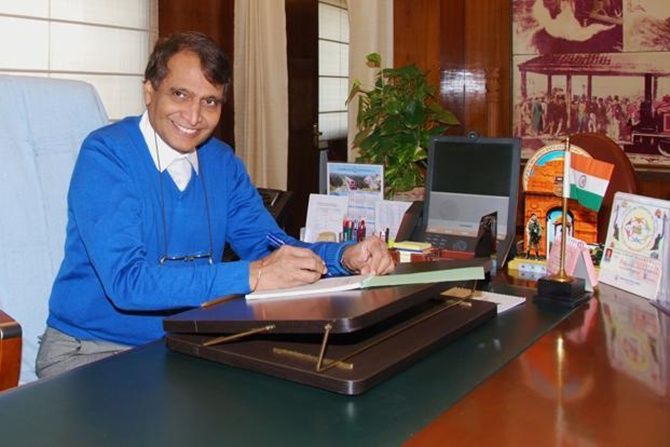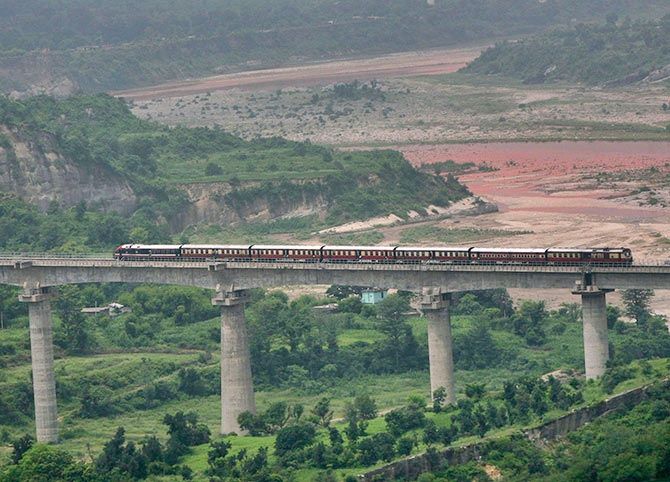Prabhu was the architect of the Electricity Act of 2003, which set the stage for reforms in the power sector. He could well end up transforming the Railways, notes T N Ninan.

We have a new star in the government, and his name is Suresh Prabhu.
If you want to read an intelligent, purposeful, well-crafted speech that conveys clarity of thought even as it brims over with ideas and policy initiatives on every front, please read Thursday’s railway budget speech.
Compare it with the speeches of previous railway ministers, with their endless lists of new train services, and you will immediately see the difference between political posturing and a professional, organisational approach.

Budget 2015: Complete Coverage
It is decades since one has come across a Railway Budget speech that is logically constructed, starting with accurate analysis of the problem, and which then uses simple language to state the main objectives, set short- and medium-term targets, and spell out how they will be met.
It is worth recalling that Mr Prabhu was the architect of the Electricity Act of 2003, which set the stage for reforms in the power sector. He could well end up transforming the Railways.
The minister read his speech at express speed - 133 words per minute, someone has calculated. He seems to work at express speed too.
Watching him function in his office is to get breathless even as a by-stander, as he carries on five different conversations simultaneously: with the people sitting across his desk, with someone leaning over his shoulder to show a file, with two more groups of people on sofas on the side, and finally an officer standing at the door as the minister gives him instructions.

All the conversations are at express speed. It is chaotic, of course, but he seems to know what he is doing. There couldn’t be another like him in the government.
The headlines have gone, predictably, to all the new passenger amenities; Mr Prabhu has correctly identified poor service quality as an issue and come out with a slew of initiatives.
But the key to his budget is his understanding of what holds back the Railways: under-investment. So he has proposed an unprecedented 50 per cent increase in investment.
Budget 2015: Complete Coverage
Further, the Railway minister has figured out the core systemic issue: that capacity is constrained because of choke points where traffic is dense, and because trains of different speeds run on the same tracks. Fast trains therefore are held back by slow goods trains just ahead of them. Deal with that problem and average train speeds can double.

There are legitimate questions about whether money will be found for the ambitious investment plan, and whether all that has been promised can be delivered. But the potential pay-off will be a dramatic increase in capacity, and additional traffic.
Since the bulk of Railway costs are fixed overheads, additional traffic does not add much to costs. Rapid growth in traffic is therefore very profitable - over two years (from last year to next year), some 30 per cent of additional revenue shows up as a surplus!
After higher dividend payments, the “net surplus” in these two years would have nearly quadrupled. Admittedly, this performance would have been helped by lower fuel costs (since oil prices have dropped), but that is only a part of the larger story.

The problem with the Railways over nearly a quarter century has been that it has been led by Railway ministers who were politicians first and ministers second (or third or fourth).
A long line from CK Jaffer Sharief and Ram Vilas Paswan to Ram Naik and Mamata Banerjee played politics with the railways and ignored its systemic needs. The only substantive initiative was from Lalu Prasad Yadav who in the first Manmohan Singh government allowed heavier loading of freight trains and got instant results.
But there were no fewer than seven Railway ministers in the five years of the second Manmohan Singh government.
In effect, the place was rudderless, the system became ossified, corruption ballooned, and successive reports on how to improve the system were simply ignored. It is refreshing, and most encouraging, to see renewed purpose.

.jpg)









